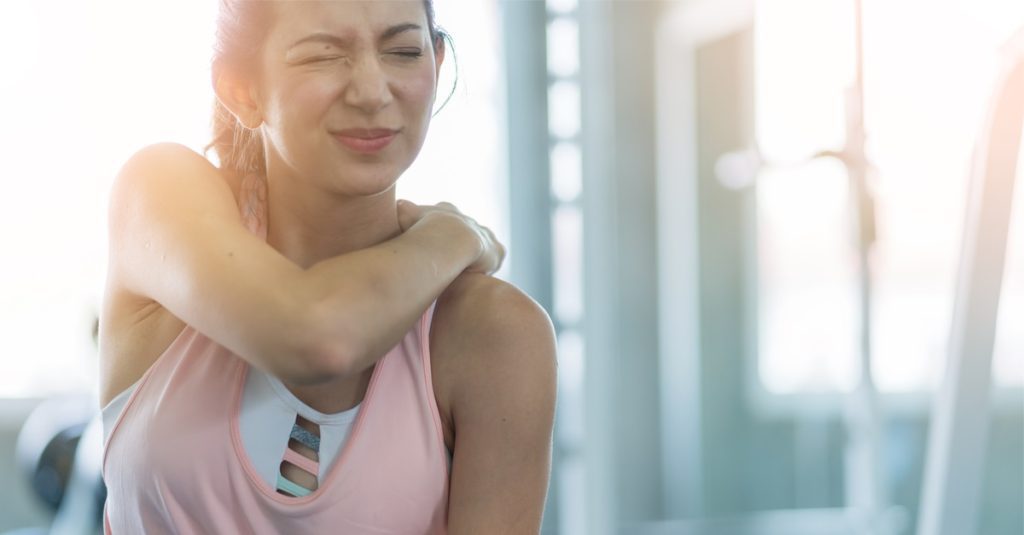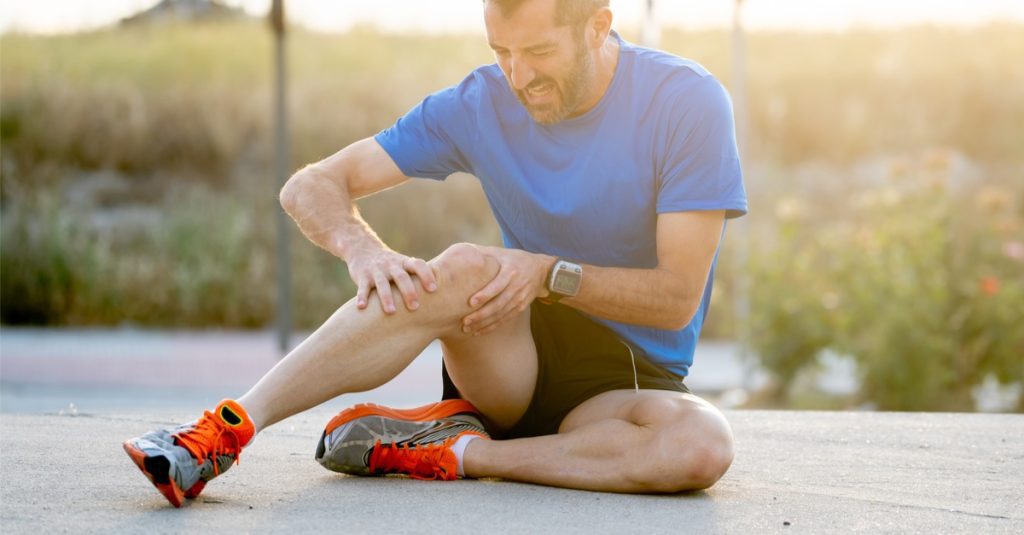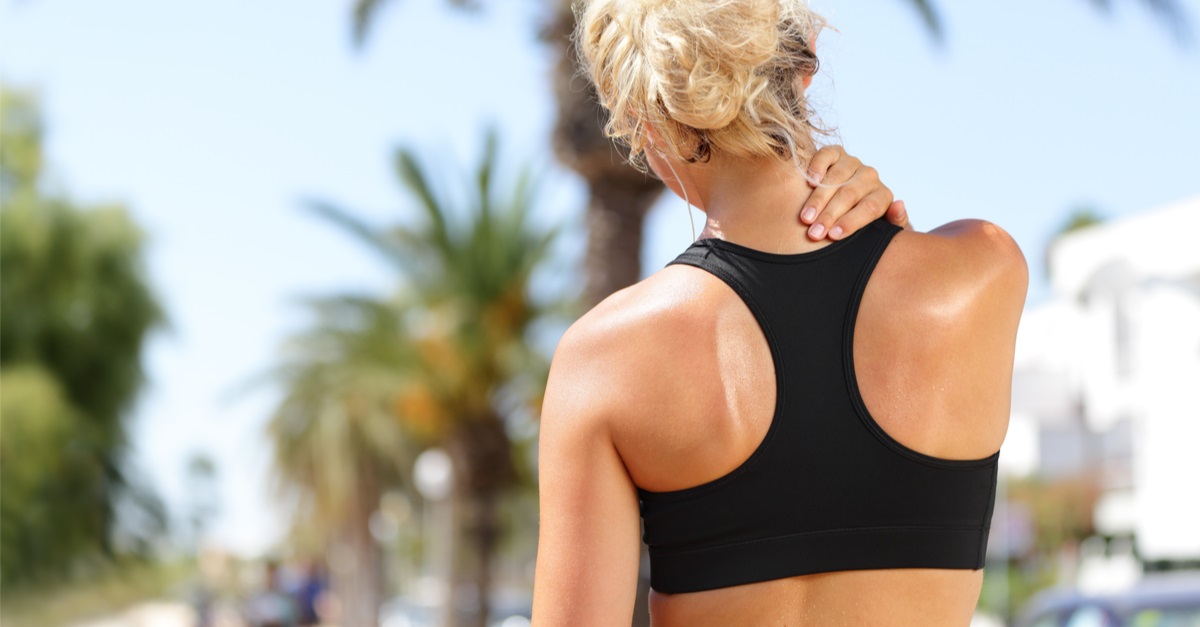Last Updated on October 20, 2022 by admin
Everyone that has ever worked out has been there before. You wake up the day after a seemingly brutal workout session full of repetitive bicep curls or squat sessions only to discover that you are cringing as you reach to get your toothbrush or walk downstairs. If you are sore, you might wonder if that’s a good thing or not. You have most likely heard the phrase “no pain, no gain,” but you still aren’t sure what type of soreness you are currently experiencing.
If that sounds like you, this article will help you understand what soreness is and if being sore after each workout is good or bad.
What is DOMS?
When it comes to soreness, one of the first things your mind and that of others will go to is DOMS. DOMS, which stands for delayed onset muscle soreness, is a well-researched phenomenon where soreness manifests in 6 to 8 hours after a workout, peaking up to 2 days after the initial training.
Some people tend to work out in a manner that brings on DOMS. These individuals like to measure how practical their training is by how sore they are. Such people follow the no pain no gain” mantra to the tee. If they aren’t sore, they believe they haven’t made any progress.
Other individuals, when working out, tend to avoid DOMS as much as possible. These individuals believe that being sore isn’t pleasurable. This causes them to wonder why they aren’t making any progress in their exercise regimen.
Is being sore a good or bad thing?
The truth is being sore can be good and bad! To understand this answer, we need to find out what causes DOMS?
Before breaking down the root cause of DOMS, it is essential to debunk a particularly annoying exercise myth. You have probably been told that lactic acid causes DOMS, but that isn’t the case. This has been debunked time and time ago. However, ironically, there isn’t a clear answer to what causes DOMS.
Research conducted on the cause of DOMS guesses that soreness results from inflammation. According to a 2013 study, DOMS is a result of inflammation brought on by microscopic tears in the connective tissues. These tears then sensitize the nociceptors, causing pain sensations to become heightened.
Why Can Soreness be Both a Good and b-Bad Thing?

Everyone is different, and soreness is not an adequate metric when it comes to making progress. To progress, regardless of if you aim to lose fat or gain muscle, you need to challenge your body consistently. The most effective way to challenge your body is to make your muscles work by pulling things, pushing things, carrying items, or simply doing everything else that provides a bit of variety to your workout routine.
The moment you attempt an unfamiliar exercise or new workout, your body is bound to provide some feedback in the next couple of days. This feedback comes in the form of muscle soreness.
The Difference Between Pain and Soreness
It is essential to note the difference between pain and muscle soreness. There is nothing wrong with muscle soreness; however, pain is an indication that your exercise or workout was too advanced for your abilities. It could also be that your form was improper, and something wrong may have occurred, causing damage to your body.
The same way certain people sweat a lot during exercises and others do not, the degree or level of soreness each person experiences varies. Constant or a high degree of soreness doesn’t always mean better results. Similarly, dulled soreness or no soreness doesn’t mean you have wasted your time.
It is all about finding a balance. As stated earlier, soreness, mainly DOMS, is a physiological response that occurs when you challenge your body to do something that it isn’t familiar with. For the reasons listed above, the level of soreness you experience cannot be used to determine how effective a workout has been.
Generally, the more proficient you become with an exercise or routine, the less the degree of soreness you will experience. This is why you need to remain cognisant of progressive overload. The implication is that you shouldn’t engage in the same exercises or rep scheme for an extended time.
If you don’t get sore at all, then it could be that you aren’t sufficiently challenging yourself. It could be that your workout routine doesn’t have enough variety or that you aren’t using enough heavy weights in your workout.
How Can You Relieve Soreness After a Workout?

There are a few ways you can relieve soreness after a workout. They are:
Getting a Massage
Recovery massages, significantly after workouts, can help reduce the level of post-exercise soreness you get.
Consuming Protein Before Working Out
Amino acids are essential in maintaining tissue. Since protein is consumed to provide our bodies with a sufficient amount of amino acids, eating a little protein before working out can help rebuild the damaged muscles during workouts. Research has shown that consuming some protein before working out forces the body to start repairing and constructing more muscle during an exercise and after.
Taking a Nap During the Daytime
Research by the National Sleep Foundation has shown that nap can enhance performance, lower accidents, and mistakes and restore alertness. There was also a correlation between muscle strength, sleep duration, and quality. Individuals who slept for seven or more hours tended to have increased hand-grip strength compared to those that slept less than 6 hours.
Wear Compression Garments
For several athletes, quickly regaining the energy they need to jump, throw or run once again is essential. Research has shown that donning compression garments can help lower the time it takes for muscles to recover, particularly strength recovery.

